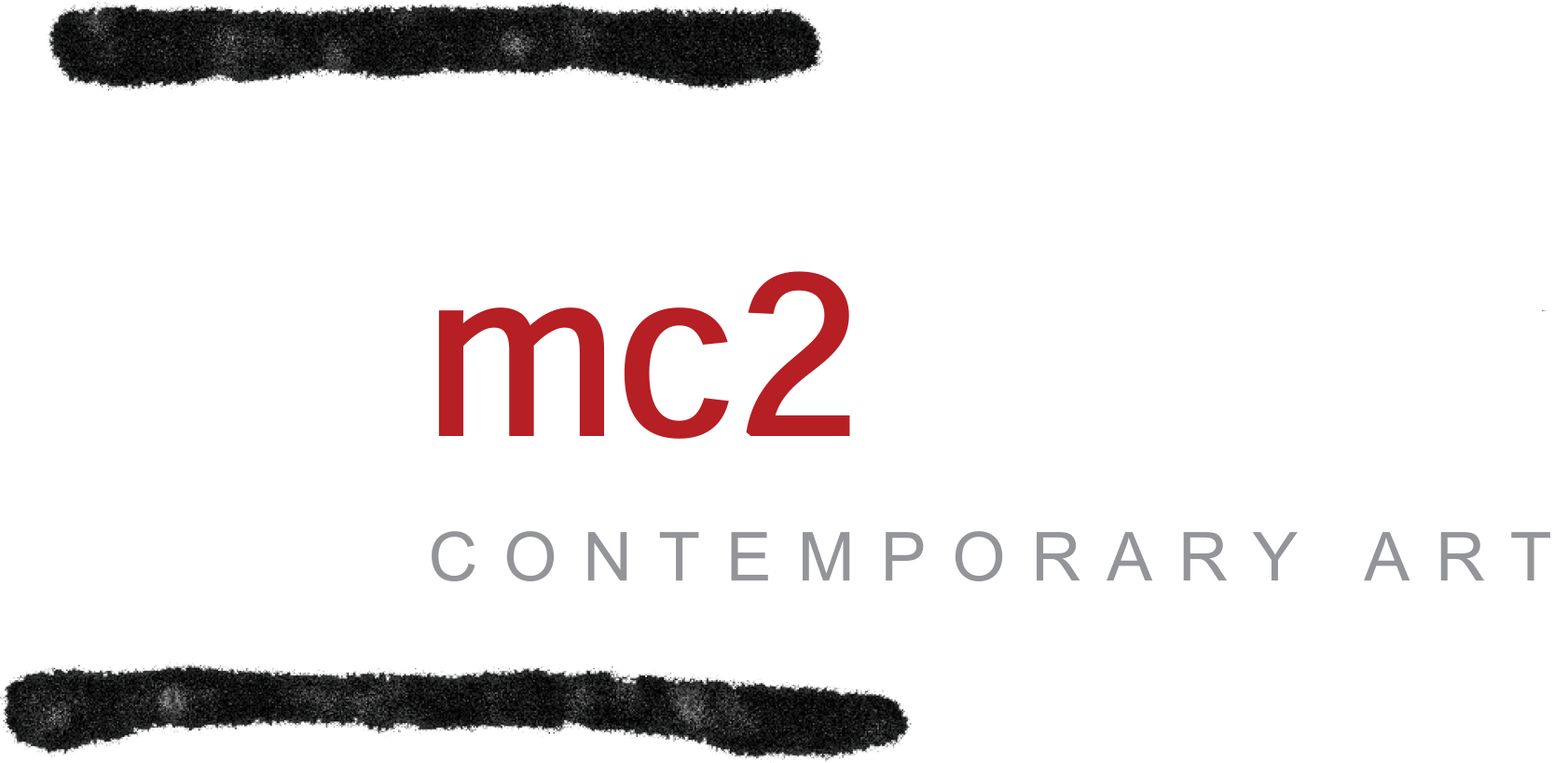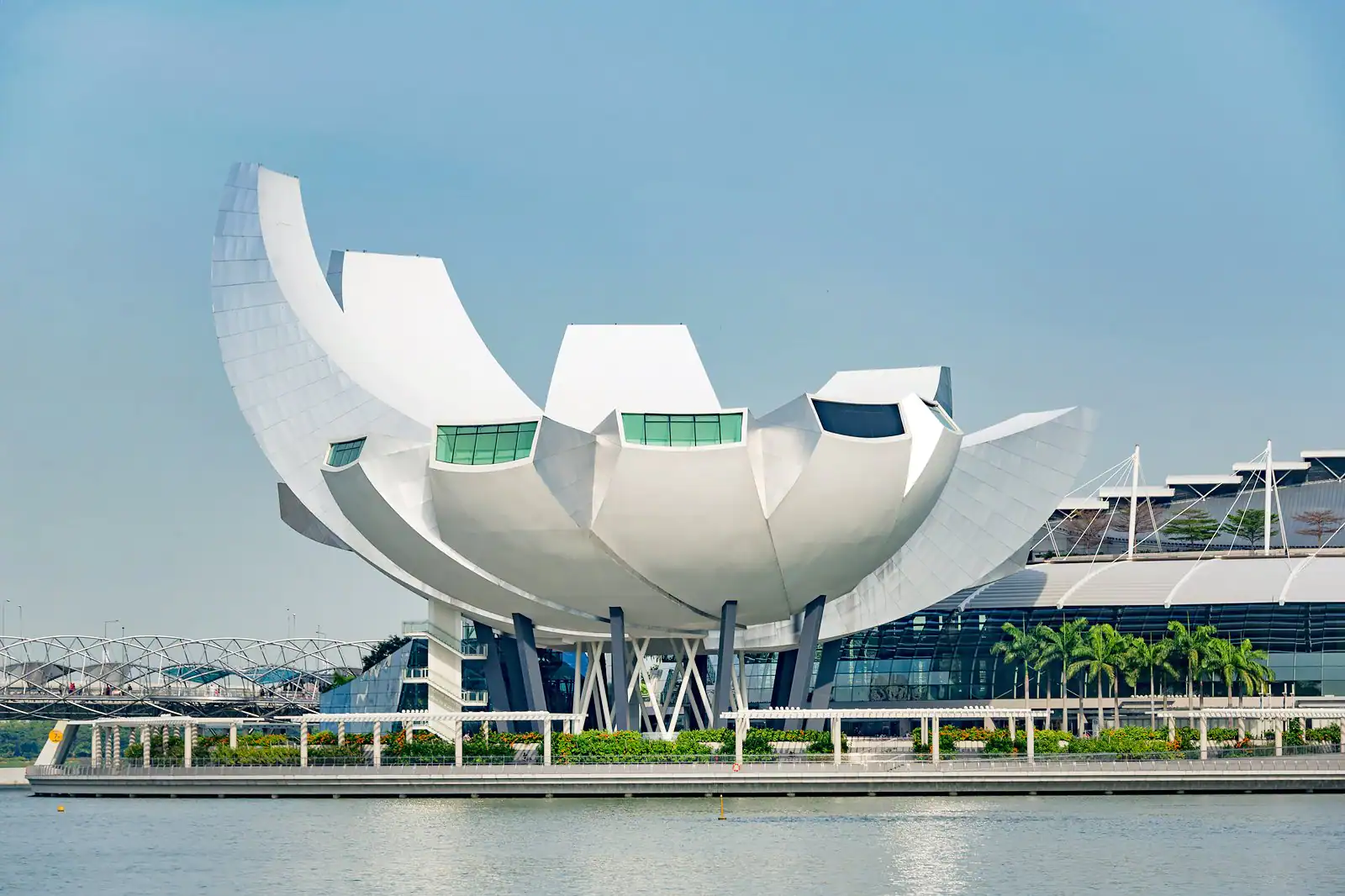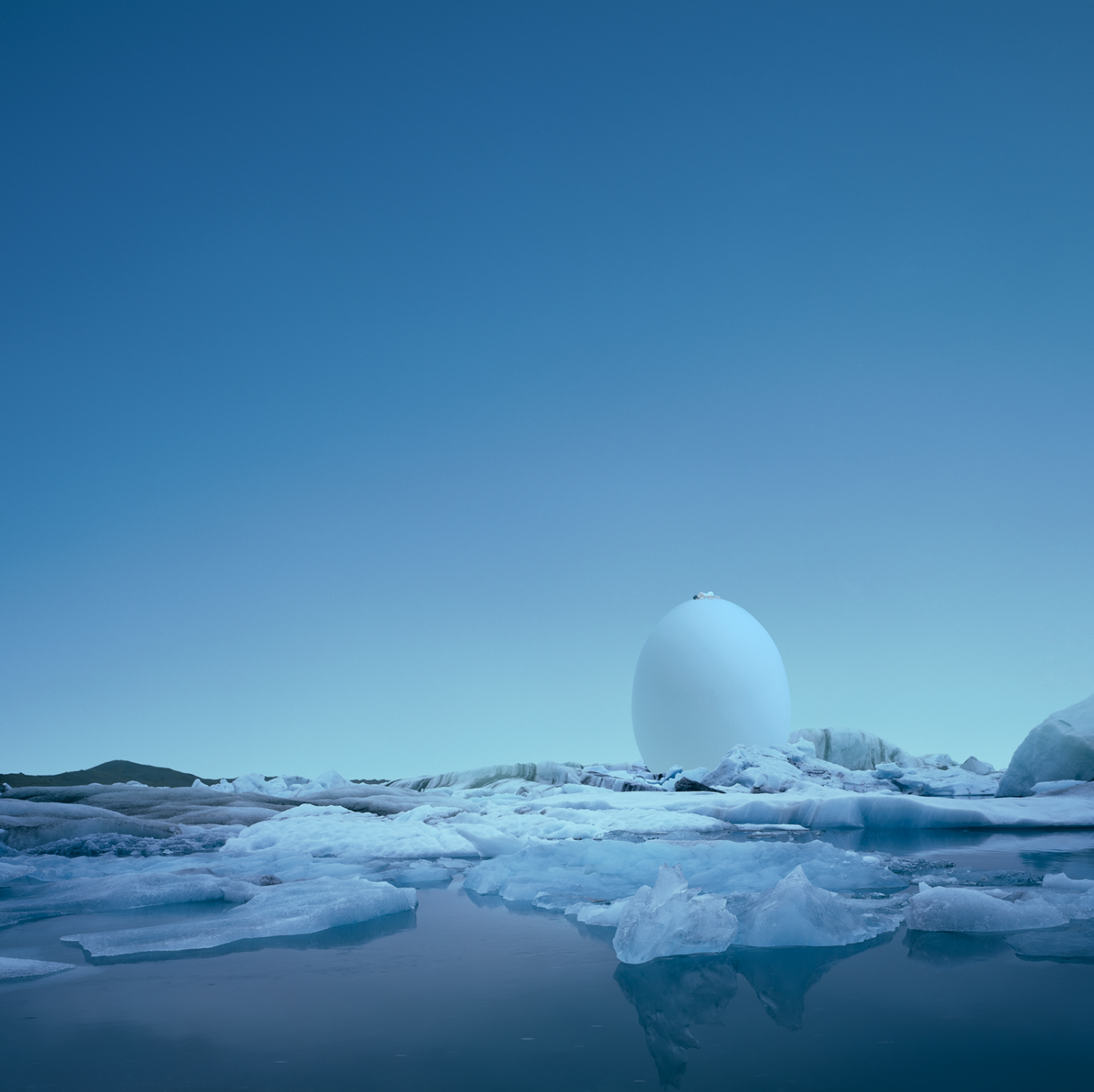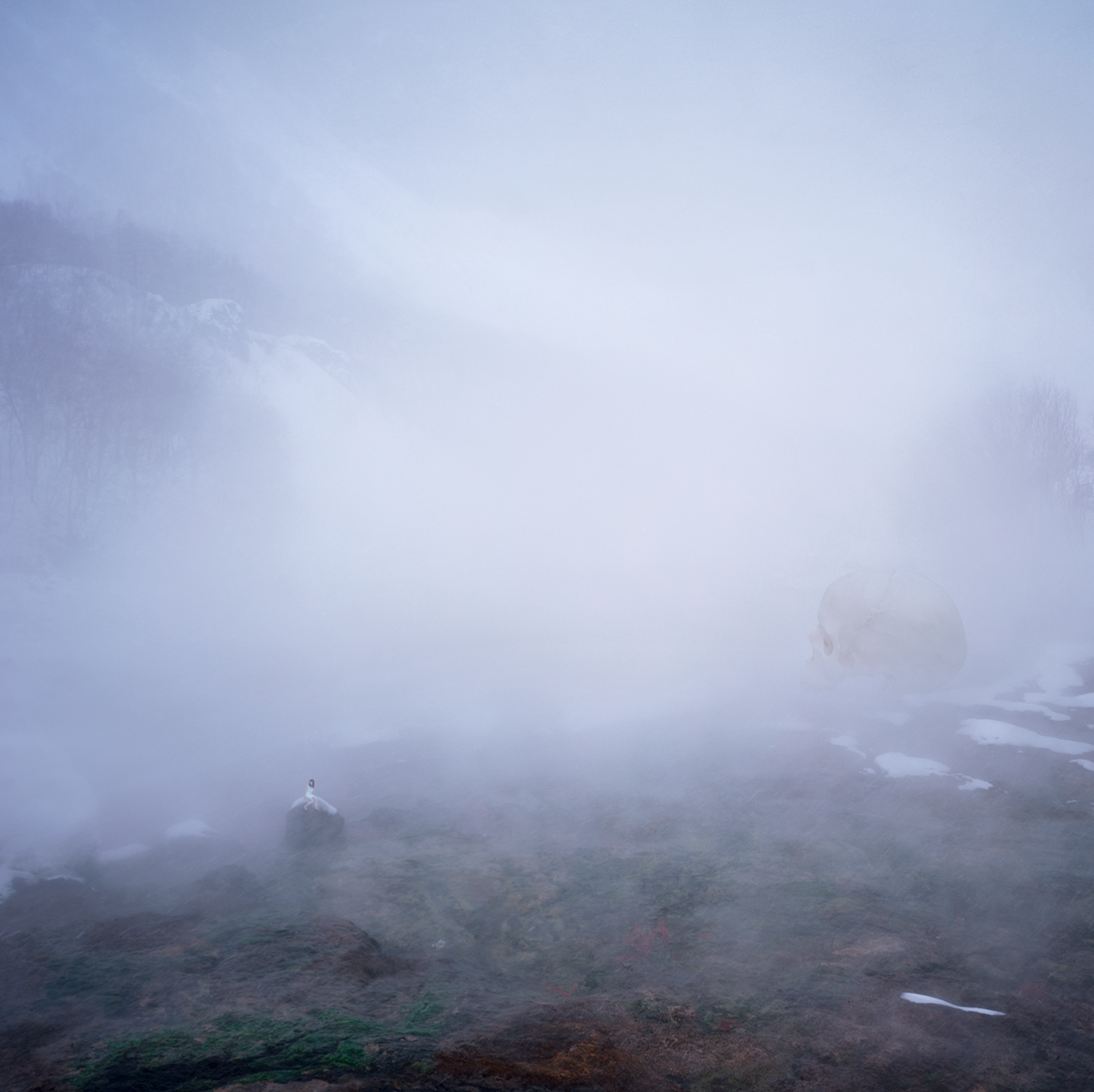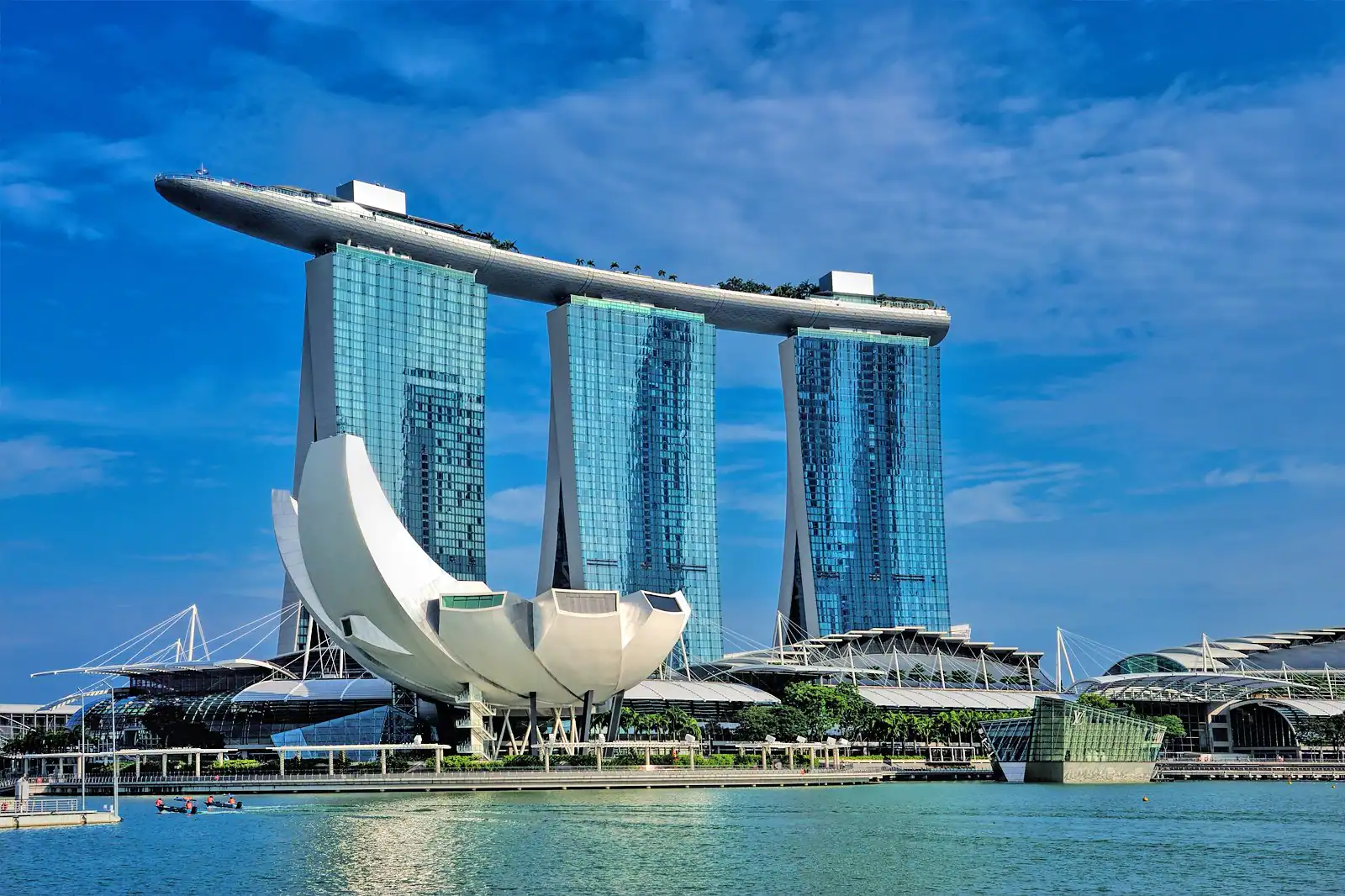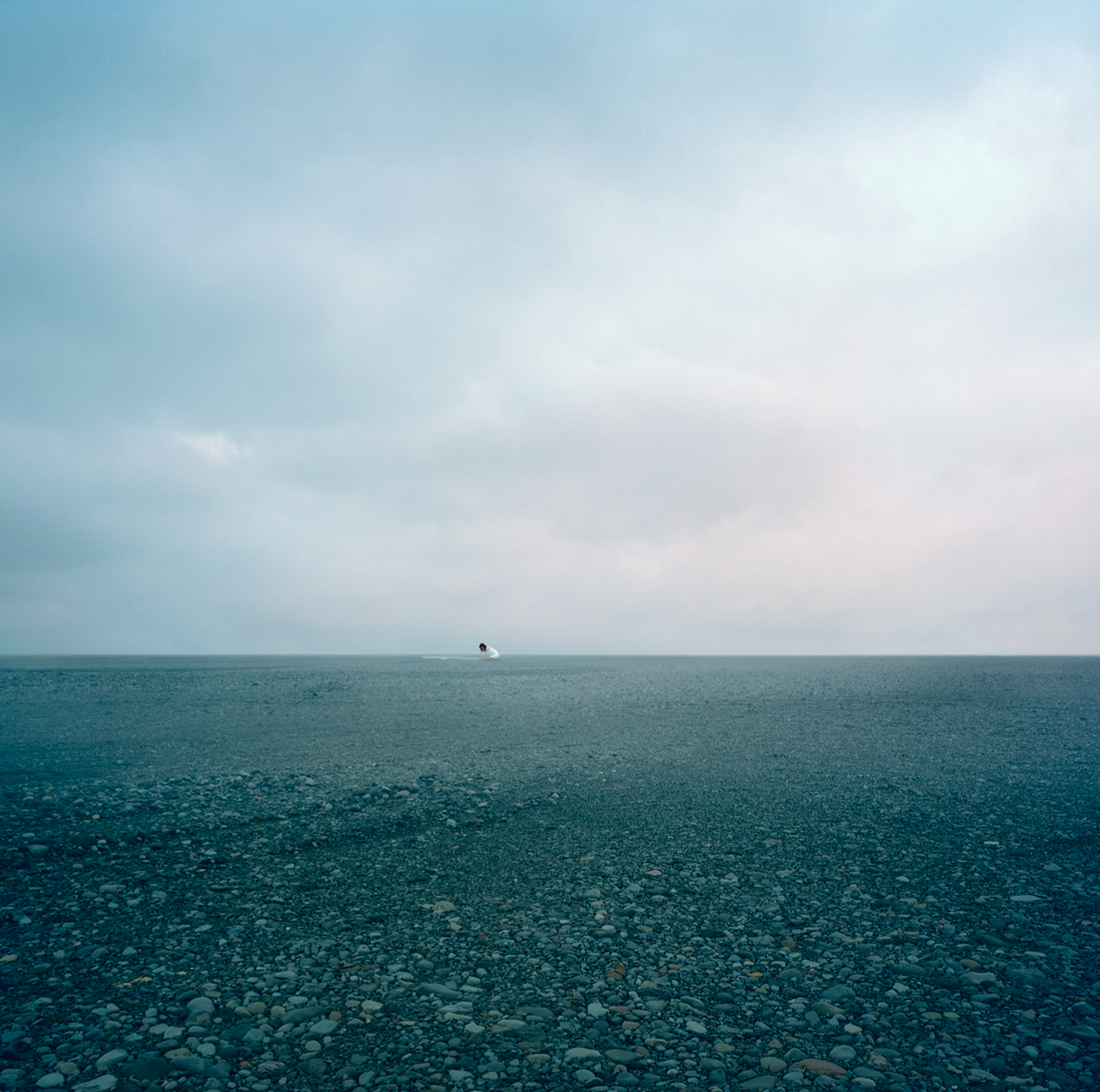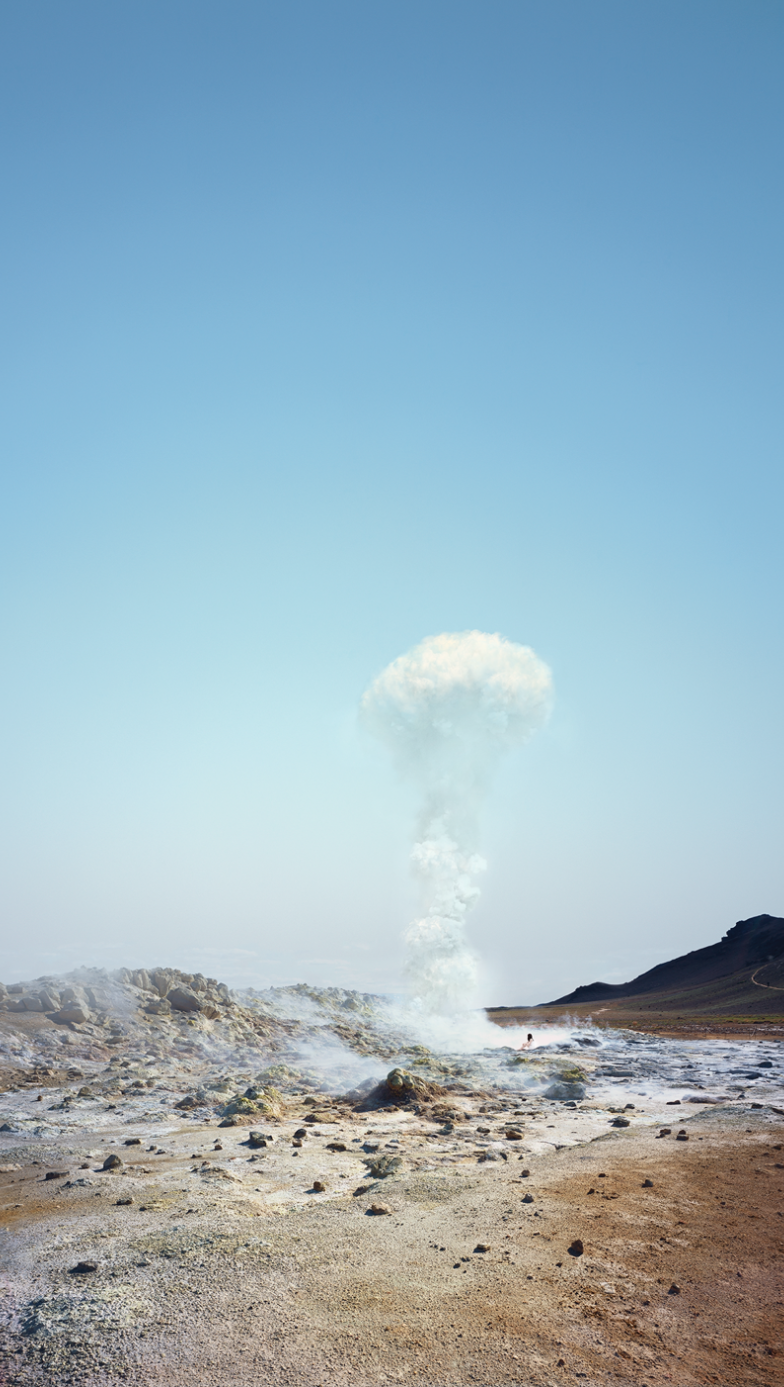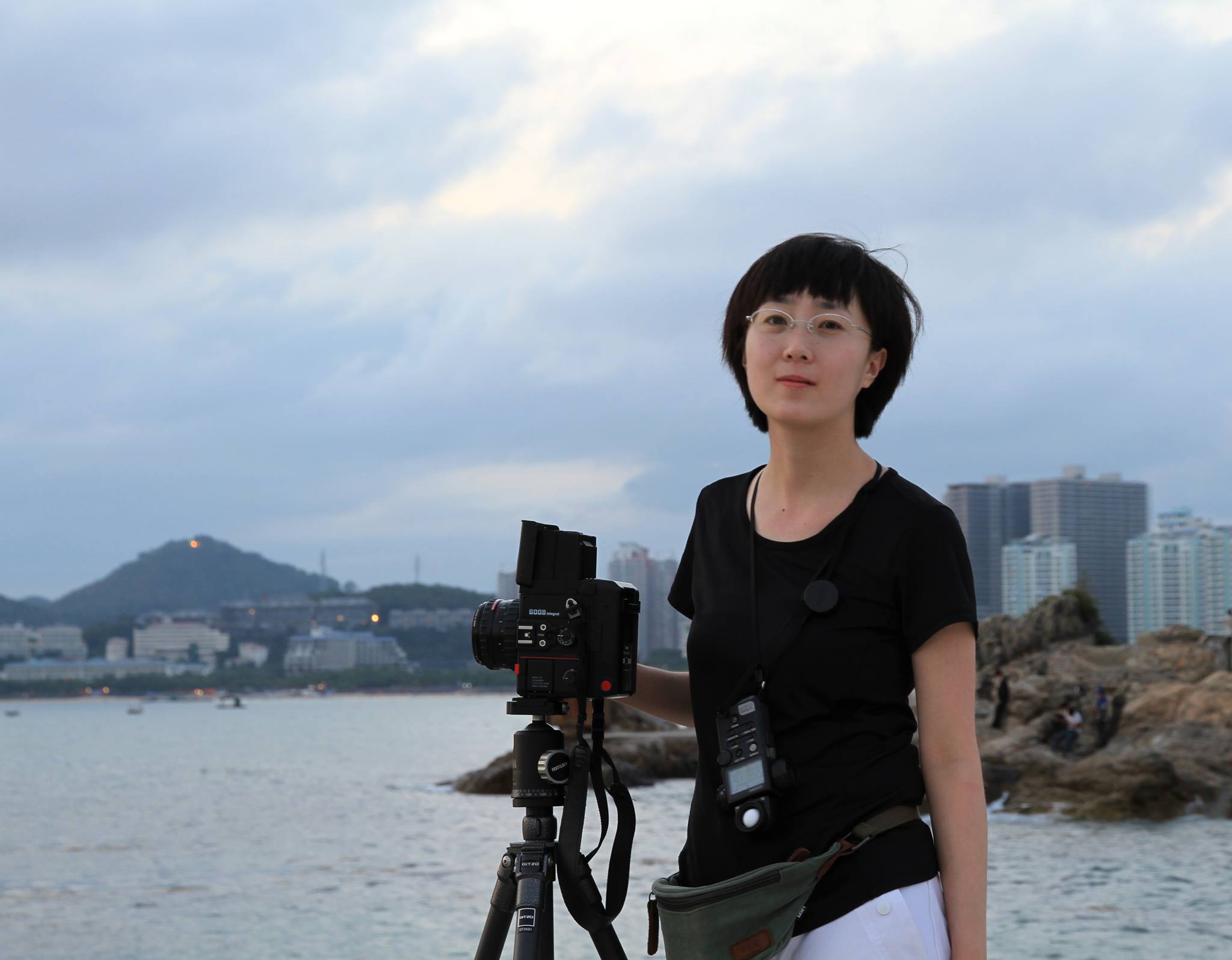Where does the border between reality and fantasy pass? More than right question when you have Liu Xiaofang, photographer, in mind.
Her compositions with a dreamlike aesthetic unite traditional Chinese painting with its landscapes rendered indefinite by fog, and the contemporary culture of the former Celestial Empire. These works recreate a world of fairy-tale fantasies, of surreal visions, in which Liu evokes a sense of nostalgia for her past, made up of uncertainties and nightmares. Source of inspiration are the traditional paintings of Chinese painting, but also the childhood memories of the artist, who immortalizes them in images, where a little girl stands as spectator and protagonist, contemplative and participant of the events that surround her.
In the delicate and apparently utopian landscapes, it is not only sky and sea that merge in the silent density of the fog, but also the boundaries between the real world and the imaginary, which become a whole, a door for the viewer, called to put questioning the concepts of truth and reality.
More than representing a form, Chinese painting tries to express the heart, the internal movement of beings, with the aim of inducing the contemplation of the infinite with maximum synthesis. The roots of this painting lie in a very ancient way of thinking, which emphasizes the unity of man and the cosmos, as well as the uninterrupted dynamism of the universe. In traditional Chinese thought, the universe is made up of breaths (Qi) of various densities and always in motion, the source of life. To recreate these breaths in an image, life has established a direct link between the universe and the human. This medium is painting. Thus, painting or contemplating a painting allows one to find unity with the cosmos. Pictorial art is more than an aesthetic work: it is an art of living.
What is striking about these images is the dense void that pervades them. In Chinese painting, the void can represent the sky, the earth, the water, the clouds, but also project the viewer into a vaster world, even an infinite one, leaving room for the imagination. The painting is a springboard for contemplation of the Absolute – this is also the principle of Chinese poems.
As regards the subjects, landscapes were the central motif of Chinese painting of the Tang dynasty (618-907); in this regard, there was talk of “shanshui”, the painting of “mountain waters”, which through generally monochrome works, tried not so much to represent nature, but to awaken feelings and sensitivity for the harmony of the world in the observer .
Liu photographs the immanent almost obsessively; influenced by the millennial art of her people, she draws on her childhood memories, freezing love, desire, pain, joy, death, fear and alienating herself from them, because only detachment from the frenzy of the world and ataraxia they free us from the obsessive need to classify.
The dominant cerulean, a vertical gush, small fireworks, the fog, the non-stop flight, the drifting raft, a dense blue of water, sky or snow, the measure of our being small pile up sensations of freedom , of happy solitude, of a last look before the loss of meaning.
Faced with these images, nostalgia for the past merges with anxiety for the future, and here we are then in another dimension, where we no longer remember the pain of our past, the fearful drama of existence, because we are no longer obsessed with Order of Living.
Liu’s photos are both real and metaphysical worlds, where only she exists with her insecurities and memories of her. Her works hide a profound transformation: her childhood nightmares change into fantastic landscapes, terror transforms into harmony. In the perfect circle that encloses her and the world, the fear of an attack becomes an explosion of stars, a shipwreck an excursion in a rowboat on calm waters, a ravine a window on creation.
Liu Xiaofang shows us that the anguish of living comes mainly from our childhood nightmares, but the human, and the spark of divinity in him, can transform darkness into beauty.
Liu Xiaofang in Artscience Museum – Singapore – 21 October 2023 / 4 March 2024
Presented Artist:
